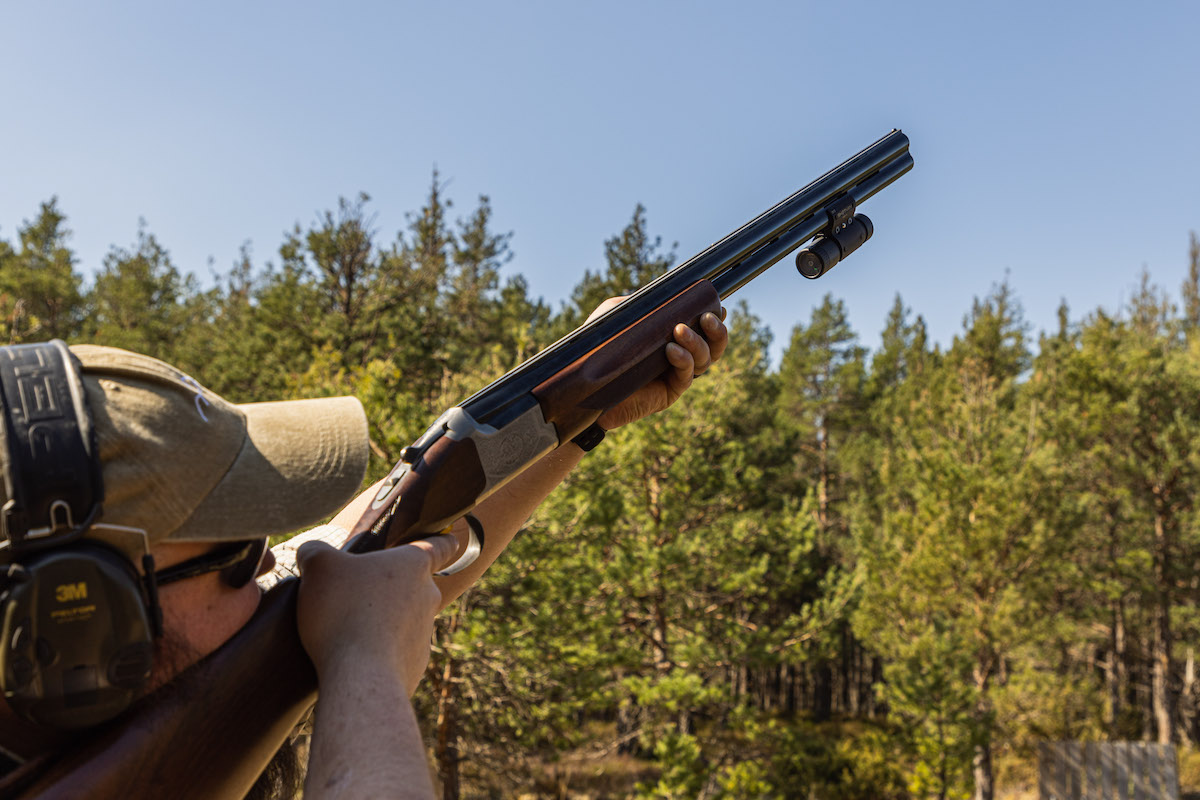Which game cartridge?
Which game cartridge?
WHICH CARTRIDGE: GAME
IT doesn’t take much energy to break a clay target, and at any discipline a little chip knocked out of the edge is just as good as reducing the target to a cloud of smoke.
Field shooting is totally different, and quick, clean kills are important.
Put more bluntly, you can shoot clays with pipsqueak cartridges and nobody minds, but live quarry should be shot with a load that’s up to the job.
At the same time, there’s no need for ‘overkill’.
Most cartridges intended for field use are labelled ‘game’, but a relatively recent trend by manufacturers is to produce ‘pigeon’ cartridges as well.
The only real difference between the two is pigeon shooters tend to fire rather more cartridges than those who shoot recognised game species, so pigeon cartridges are designed to deliver adequate performance at a cheaper price.
The performance of both types of cartridge is broadly similar, and we are sure that many pheasants and partridges are shot very efficiently with ‘pigeon’ cartridges.
How much shot?
The classic English game load for a 12-bore is 1.1/16oz (30gr) of No.6, but the requirements can be many and varied.
One ounce, or 1.1/16oz, are the loads in general use, but there are other needs.
For instance, many high-pheasant experts will use 1.1/8oz or even 1.1/4oz to give a more dense pattern at range.
For small birds, say snipe for instance, some may go as low as .7/8oz of small shot.
The foregoing assumes you shoot a 12-bore.
The 20-bore enthusiasts rarely go higher than 1oz of shot, although loads as high as 1.1/8oz, in 2.1/2in cases are available.
Such loads, however, produce quite a heavy recoil when fired through a lightweight 20-bore.
Loads of 7/8oz and 3/4oz are much more commonly used.
Top practical load for a 28-bore is .3/4oz, and loads down to .1/2oz are commonly available.
With guns of all bores, remember the heavier the load of shot and the faster it is propelled through the air, the greater the recoil is likely to be. Gun weight soaks up recoil, so lightweight guns recoil more heavily.
And don’t fall for the old chestnut that a 20-bore has less recoil than a 12.
The size of the bore doesn’t matter – the recoil you feel depends on three factors: the weight of the shot load, its velocity, and the weight of your gun.
Other factors, such as gun fit, actual bore diameter, and length of forcing cones, can have a marginal effect, but are not as important.
What size?
Most UK game birds are shot with No.6, although No.7 can give slightly denser and equally hard-hitting patterns for pheasants and partridges at all but the longest ranges.
Basically, with the smaller shot the slightly lower hitting power is compensated for by more pellet strikes. For this reason, many pigeon shooters prefer No.7.
Snipe specialists may go as low as No.9 – in other words, skeet cartridges – while a larger creature such as a rabbit requires more hitting power than a game bird, and No.5 is usually the preferred shot size.
If you look at the sheer size of a big brown hare, you may decide No.4 is a more appropriate load.
How fast?
Most game cartridges are rated slightly lower in muzzle velocity than clay loads – but not by much.
Around 1,375 feet per second is usually top whack, although some steel and special-purpose loads are a little quicker.
Shot material
Most game in the UK is shot with lead. However, in England and Wales the lead shot regulations ban the use of lead over all foreshore, over specified Sites of Special Scientific Interest (SSSIs), and for the shooting of all ducks and geese, coot and moorhen – wherever they occur.
In Scotland the regulations are different, and non-lead shot only has to be used where it is likely to fall on wetlands. There is, at the time of writing, no immediate sign of shot regulations being introduced in Northern Ireland – although it is probably only a matter of time.
Practical alternatives to lead are steel, bismuth, tungsten matrix, and Hevishot (the commercial name for a metallic alloy containing tungsten).
A full breakdown of these materials is given in our section on wildfowl cartridges. It is, however, important to bear in mind most game guns in use in the UK – even those with normal magnum proof – are not proofed for heavy steel loads.
The best guide is what is written on the cartridge packet. If in doubt, then ask your gunsmith.
Use of the ‘wrong shot’ for a species is not to be taken lightly.
BASC say: “Increased monitoring of shoots and game dealers is likely this season (2006/7). Remember shoot organisers (landowners, shoot captains, gamekeepers, agents and club chairmen) can be prosecuted, as well as the individual gun, for allowing lead shot to be used illegally. Prosecution may also lead to loss of shotgun certificates and BASC insurance cover.”
Wad material
As in clay shooting, plastic wads falling on grazing land constitute a danger to grazing farm stock, and therefore fibre wads should always be used in these circumstances.
Biodegradable plastic wads, which decay when exposed to daylight over a relatively long period, do not degrade fast enough to be safe over grazing land.
In addition, some shoot owners and managers do not like the idea of their woods and arable land being littered with plastic.
The golden rule is to always ask the shoot owner or organiser about cartridge preferences.








